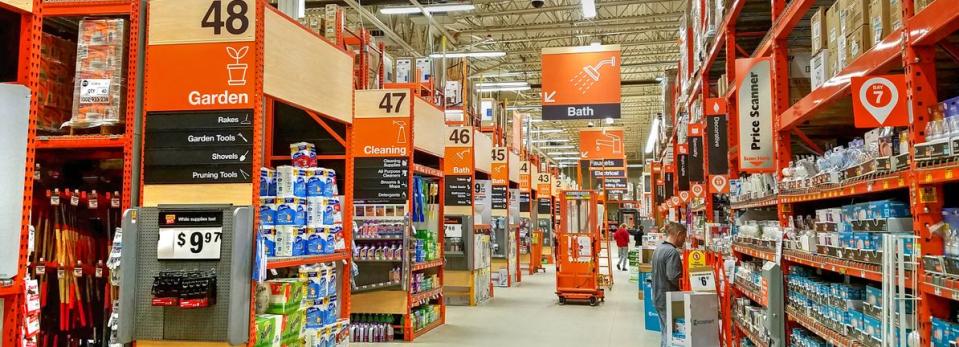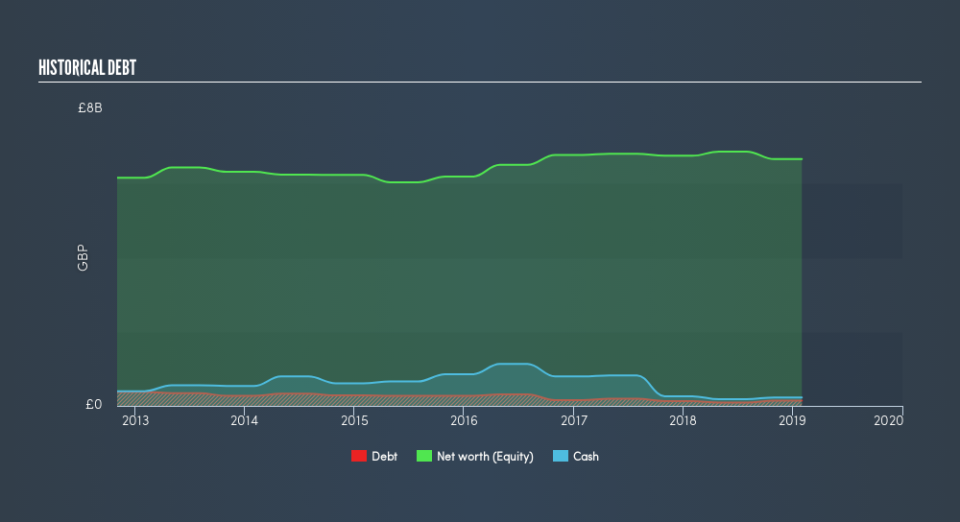Kingfisher (LON:KGF) Takes On Some Risk With Its Use Of Debt

Howard Marks put it nicely when he said that, rather than worrying about share price volatility, 'The possibility of permanent loss is the risk I worry about... and every practical investor I know worries about.' When we think about how risky a company is, we always like to look at its use of debt, since debt overload can lead to ruin. We can see that Kingfisher plc (LON:KGF) does use debt in its business. But the more important question is: how much risk is that debt creating?
When Is Debt Dangerous?
Debt is a tool to help businesses grow, but if a business is incapable of paying off its lenders, then it exists at their mercy. Part and parcel of capitalism is the process of 'creative destruction' where failed businesses are mercilessly liquidated by their bankers. However, a more common (but still painful) scenario is that it has to raise new equity capital at a low price, thus permanently diluting shareholders. By replacing dilution, though, debt can be an extremely good tool for businesses that need capital to invest in growth at high rates of return. The first step when considering a company's debt levels is to consider its cash and debt together.
View our latest analysis for Kingfisher
How Much Debt Does Kingfisher Carry?
You can click the graphic below for the historical numbers, but it shows that Kingfisher had UK£142.0m of debt in January 2019, down from UK£176.0m, one year before. However, it does have UK£229.0m in cash offsetting this, leading to net cash of UK£87.0m.
How Strong Is Kingfisher's Balance Sheet?
According to the last reported balance sheet, Kingfisher had liabilities of UK£2.63b due within 12 months, and liabilities of UK£711.0m due beyond 12 months. On the other hand, it had cash of UK£229.0m and UK£343.0m worth of receivables due within a year. So its liabilities total UK£2.77b more than the combination of its cash and short-term receivables.
This is a mountain of leverage relative to its market capitalization of UK£4.11b. Should its lenders demand that it shore up the balance sheet, shareholders would likely face severe dilution. Despite its noteworthy liabilities, Kingfisher boasts net cash, so it's fair to say it does not have a heavy debt load!
But the bad news is that Kingfisher has seen its EBIT plunge 15% in the last twelve months. We think hat kind of performance, if repeated frequently, could well lead to difficulties for the stock. The balance sheet is clearly the area to focus on when you are analysing debt. But it is future earnings, more than anything, that will determine Kingfisher's ability to maintain a healthy balance sheet going forward. So if you want to see what the professionals think, you might find this free report on analyst profit forecasts to be interesting.
Finally, a business needs free cash flow to pay off debt; accounting profits just don't cut it. While Kingfisher has net cash on its balance sheet, it's still worth taking a look at its ability to convert earnings before interest and tax (EBIT) to free cash flow, to help us understand how quickly it is building (or eroding) that cash balance. In the last three years, Kingfisher's free cash flow amounted to 30% of its EBIT, less than we'd expect. That weak cash conversion makes it more difficult to handle indebtedness.
Summing up
Although Kingfisher's balance sheet isn't particularly strong, due to the total liabilities, it is clearly positive to see that it has net cash of UK£87m. So although we see some areas for improvement, we're not too worried about Kingfisher's balance sheet. Given our hesitation about the stock, it would be good to know if Kingfisher insiders have sold any shares recently. You click here to find out if insiders have sold recently.
When all is said and done, sometimes its easier to focus on companies that don't even need debt. Readers can access a list of growth stocks with zero net debt 100% free, right now.
We aim to bring you long-term focused research analysis driven by fundamental data. Note that our analysis may not factor in the latest price-sensitive company announcements or qualitative material.
If you spot an error that warrants correction, please contact the editor at editorial-team@simplywallst.com. This article by Simply Wall St is general in nature. It does not constitute a recommendation to buy or sell any stock, and does not take account of your objectives, or your financial situation. Simply Wall St has no position in the stocks mentioned. Thank you for reading.

 Yahoo Finance
Yahoo Finance 
